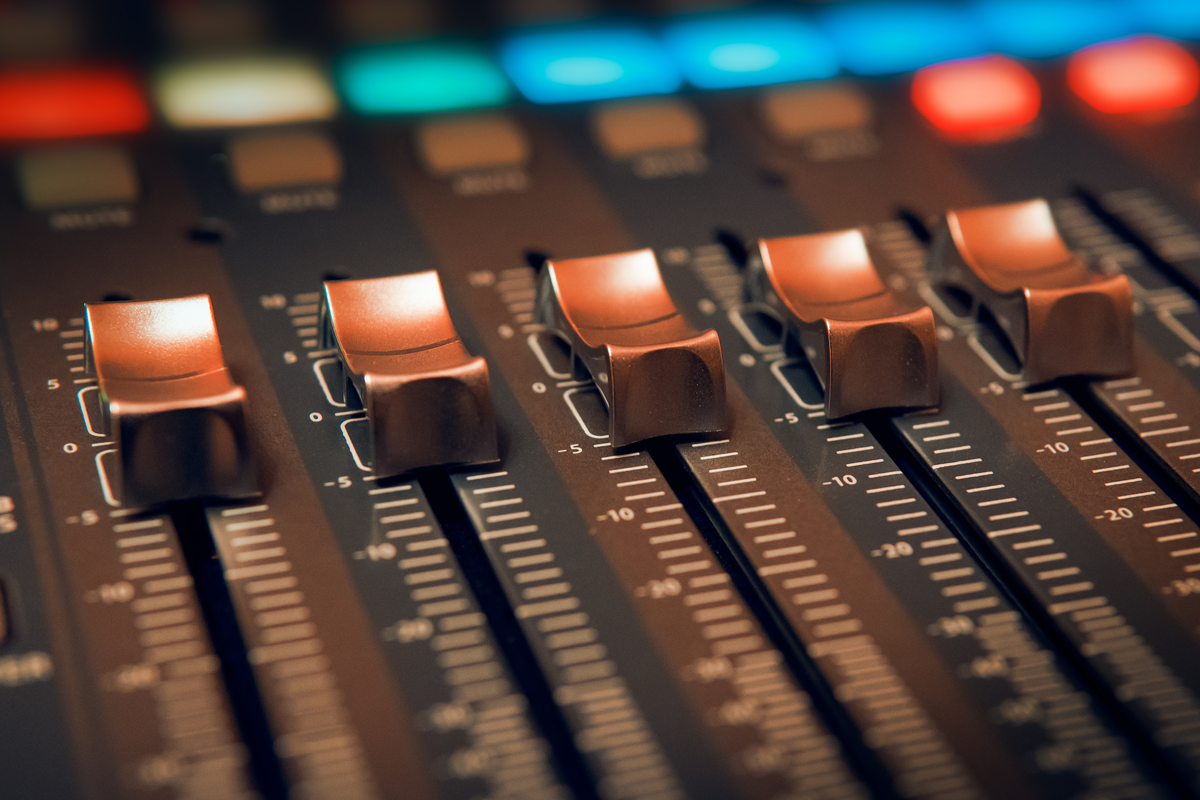
Compression is a common audio production technique used to balance the dynamic range of sounds and make them more uniform. Compressors are usually multi-function units that can be used for both studio and live sound settings, depending on the user’s needs. Compressors help reduce unwanted background noise, create a stronger sense of presence in the mix, and are useful for creating a specific sound or feel.
Dynamic control
In order to understand how compression works, it is important to first understand what dynamic range is. Dynamic range can be defined as the difference in loudness between the quietest and loudest parts of a piece of audio. Compressors reduce this range by “compressing” the audio signal. This can be done by decreasing the amplitude of loud sounds, boosting softer sounds, or both. Compressors also reduce dynamic range by reducing the peak level of a sound as it rises beyond a certain threshold.
Check the levels
Output level can also be effected by adding gain. Experimenting with the attack and release settings can provide some interesting results but remember that subtle use of this effect is advised.
It's in the details
Compressors are used to manipulate and control various elements in a mix for specific purposes. For example, if you want to accentuate the kick drum, you can add compression to make it sound louder and punchier. Similarly, if you want to pull out more detail in an acoustic drum sample, adding a compressor will bring out its unique character.
Audio mixing
In addition to helping shape sounds in the mix, compressors are also useful for mixing audio. Audio Compressors can be used to create a sense of space in the mix by controlling the loudest and quietest parts. Audio Compression is also useful for maintaining cohesion between instruments that have different levels of volume or attack, as well as smoothing out any peaks and valleys in the track’s frequency spectrum.
Digital audio workstation
When using a compressor in a DAW (Digital Audio Workstation), it is important to set the correct values and adjust them according to the sound you are looking for. Generally speaking, these settings should be adjusted relative to the audio source’s dynamic range. When making adjustments, it is best to start with low audio compression ratios and slowly increase the amount of gain reduction. It is also important to keep a close eye on the output level as you are adjusting the settings, so that you don’t clip or distort your audio signal.
Drum samples
When using drum samples in your mix, compression can help bring out their unique character and make them stand out more. Audio Compression can also be used to create a more consistent sound if you are using multiple samples of the same type. Additionally, compression can help make drums sound bigger and fuller in the mix by controlling their dynamic range.
Input Signal
Whether you're boosting an incoming signal using hardware compressors, or effecting that same signal after recording, there are plenty of options. Some vocalists and musicians may prefer a slightly compressed signal while recording and many sound engineers will compress the signal at source to control the highs and lows.
Compression ratio determines...
Compression ratio in audio refers to the amount by which the dynamic range of a recording is reduced. It is measured by the ratio of the loudest to the softest sound in a recording. A higher compression ratio means that the difference between the loudest and softest sounds is smaller, resulting in a more consistent overall volume. This can be useful in situations where background noise is present or for broadcasting, but can also result in a loss of dynamics and a less natural sound. Compression can be applied to individual tracks or to the entire mix, and can be adjusted to achieve the desired balance of volume consistency and dynamic range.
Compressor settings can range from a lightly compressed signal to heavily compressed depending on what exactly is needed in your music production. It's worth remembering that compression reduces the overall dynamic range and will iron out changes in volume depending on what settings are used.
Excessive compression
Using too much compression in an audio mix can have a number of negative effects. One of the main issues is that it can make the overall mix sound overly “squashed” or “pumped,” with a lack of dynamics. This can make the mix sound less interesting and less engaging. Additionally, too much compression can lead to audible distortion, especially in the higher frequencies, which can make the mix sound harsh or fatiguing. It can also lead to a loss of clarity, as the compressed audio may be less distinct and harder to understand. Overall, it’s important to use compression judiciously and to be mindful of the potential negative effects it can have on a mix.

Definition of some common terms
Audio signal: The audio signal is the sound wave that is being processed and manipulated by the compressor. It is the input that is fed into the compressor and is then altered to achieve the desired compression effect.
-
Gain reduction:
-
Refers to the amount by which the compressor reduces the level of the audio signal above the threshold. It is a measure of how much the dynamic range of the audio is being compressed. The gain reduction can be adjusted to achieve the desired level of compression.
-
Audio compressor:
-
An audio compressor is a device or software that is used to reduce the dynamic range. It can be used to decrease the amplitude of loud sounds, boost softer sounds, or both, in order to create a more uniform and balanced audio mix. Compressors can be used in both studio and live sound settings and are an essential tool in audio production.
-
Output signal:
-
The output signal is the processed signal that comes out of the compressor. It is the final sound wave that has been altered by the compressor and is ready to be used in the audio mix. The output signal can be adjusted to achieve the desired level of compression.
-
Output gain:
-
The output gain is the level of the output signal after it has been processed by the compressor. It can be adjusted to achieve the desired level of compression and to avoid any distortion or clipping.
-
Input signal:
-
The input signal is the original signal that is being fed into the compressor. It is the sound wave that is being altered by the compressor to achieve the desired compression effect. The input signal can be adjusted to achieve the desired level of compression.
-
Attack and release:
-
Attack and release are parameters on a compressor that control how quickly the gain reduction is applied to the audio signal when it exceeds the threshold and how quickly it is released when the signal drops back below the threshold. These parameters can be adjusted to achieve the desired level of compression and to create the desired sound or feel in the audio mix.
-
Audio signal:
-
The audio signal refers to the sound wave that is being processed and manipulated by the compressor. It is the input that is fed into the compressor and is then altered to achieve the desired compression effect.
-
Dynamic range compression:
-
Dynamic range compression is a method of reducing the difference in loudness between the quietest and loudest parts of a piece of audio by using a compressor. This technique is used to balance the dynamic of sounds and make them more uniform, resulting in a more cohesive audio mix.
-
Downward compression:
-
Downward compression is a type of compression where the amplitude of loud sounds is decreased, resulting in a reduction of the dynamics. This technique is used to tame loud sounds, such as drums or vocals, and bring them in line with the rest of the audio mix.
-
Upward compression:
-
Upward compression is a type of compression where the amplitude of soft sounds is increased, resulting in a reduction of the dynamics. This technique is used to boost soft sounds, such as background vocals or subtle instrumentation, and make them more prominent in the audio mix.
-
Soft knee:
-
Soft knee is a type of compression characterized by a gradual increase in gain reduction as the input signal exceeds the threshold, resulting in a more natural and subtle compression. Soft knee is often used when a more delicate touch is needed in the compression process.
-
Compressor transitions:
-
Compressor transitions refer to the way in which the gain reduction is applied and released as the input signal level changes. These transitions can be adjusted to achieve a smooth or sudden compression effect, depending on the desired sound or feel of the audio mix.
-
Hard knee:
-
Similar to soft knee, hard knee is a type of compression characterized by a sudden increase in gain reduction as opposed to the gradual increase characterised with soft knee. The input signal exceeds the threshold, resulting in a more pronounced and obvious compression. This technique is often used when a more aggressive compression effect is needed.
-
Serial compression:
-
Serial compression refers to the process of using multiple compressors in sequence to achieve a desired compression effect. This technique allows for greater control over the compression process, allowing for multiple stages of compression to be applied to the audio signal.
-
Parallel compression, ducking:
-
Parallel compression, also known as “New York compression” or “ducking,” is a mixing technique used to add punch and energy to a track. It involves mixing a heavily compressed version of a track with the original, uncompressed version. This creates a balance between the compressed, punchy elements and the natural dynamics of the original track, resulting in a fuller and more polished sound. It is commonly used on drums, vocals and bass and also in sound design for films and video games. Try bouncing out a mix, paste it onto a separate track in the mix and run it through an audio compressor. Check the results.
Useful compression music production techniques
Overall, compression is an essential tool for audio production that helps shape sounds and creates cohesion in a mix. By understanding how it works and adjusting the settings accordingly, you can get the most out of your audio files. Whether you are using acoustic drum samples or a full drum kit, compression can help bring out their unique character and make them stand out in the mix.
Thank you for reading!
We hope this article has given you insights into the use of audio compression in audio production. For more information on using compressors and drum samples, please view our product page at Macdrum.com or contact us directly. Thanks again for reading!
Macdrum samples
All samples on offer at Macdrum.com feature little to no compression, meaning that producers and engineers who use our products will find great sounding and versatile audio that can be easily effected due to a flat source sound.
Mixing Macdrum samples
All our samples are designed to make your mix sound great. With subtle use of compression, reverb, EQ etc, you can get a truly awesome sound. Turn your track into a percussion powerhouse!
